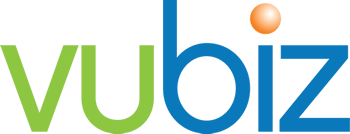 |
Written by Liz McDermott |

Many companies have made work more inclusive for lesbian, gay, bisexual, and transgender (LGBT) employees over the last few years. But that’s not the end of gender identity safety. There are still challenges in creating transgender inclusion in the workplace. Aside from adopting inclusive policies and procedures to support your LGBT people and other marginalized groups, there are some practical considerations you need to think about as an employer:
- How can you reduce any risk of bullying or harassment based on gender?
- How will HR manage records so that gender transitions are accommodated without risking any privacy issues?
- How do you support transgender inclusion without putting anyone at risk?
- How will dress codes be sensitive to people transitioning employees?
- How do you make locker room facilities safe for everyone, including transgender people?
Here are five things you should consider when creating a safe environment for the trans community.
1. Bullying and Harassment Prevention Strategies for Business
One of the best ways to avoid bullying and harassment of gender-fluid employees is to set the right tone from the top. Ensure your managers complete gender identity training to understand that discrimination of any kind will not be tolerated. You can also talk to your employees about this — especially the ones who work in the public areas of the workplace. Let them know that any form of discrimination based on gender stereotypes will not be tolerated, and encourage them to report it if they see it happening. Create workplace policies that deal with bullying, harassment, and discrimination in a constructive way. Make sure that employees know this policy exists and that it applies to everyone, not just managers.
2. Record Keeping and Data Protection for Transgender Employees
If you have an employee transitioning gender, you will need to change their records and data security accordingly. You may also need to change the records for anyone who has shared information with the employee. This will include information such as details of their health condition related to medical procedures, any accommodation they need, any special services they want you to provide, and any leave they have taken.
Your records also need to reflect any name changes employees have made. This is important not just for data protection but to make work more comfortable and supportive and to avoid any inadvertent discrimination or harassment. You may need to re-educate all employees who have interacted with the transitioning employee so that everyone on the team understands the new name, pronouns, and any other details they need to know.
3. Gender Identity Workplace Training and Education
In addition to inclusive policies and practices, employers are required by law to provide training and education to protect their employees’ health and safety. This includes sexual harassment and discrimination prevention training and education on issues such as health concerns such as the risk of acquiring HIV/AIDS, Hepatitis B, and other sexually transmitted diseases. You may already have a health and safety policy in place, but this is a good opportunity to add information on sexual discrimination, as well as health care benefits and safety concerns for transgender employees.
You may also want to add gender identity training to your program so that everyone understands what these are and what they mean. You could also include information on what rights trans employees are protected by and how you are committed to creating a safe and inclusive work environment for them.
4. Sensitivity in Dress Codes for Trans Employees
Our bodies are gendered in the context of cultural expectations, as well as being gendered ourselves. Certain physical characteristics are associated with either masculinity or femininity, resulting in our being labeled as a man or a woman depending on the quantity of those characteristics we have.
It’s best to be very careful in the way you approach the dress code to ensure a trans-inclusive workplace. You don’t want to be seen as forcing anyone to dress in a certain way, but you also need to ensure that everyone feels safe and comfortable in how they look at work. The best way to do this is to avoid gender-specific dress codes as much as possible.
There are good reasons for gender-specific dress codes in some professions, but avoid any distinction based on male or female as much as possible. For example, if your company has a rule that men must wear a tie and women must wear a blouse, you could get around this by allowing men to wear ties and women to wear blouses. This way, no one is singled out based on their gender.
You could also allow employees to wear clothing that doesn’t draw attention to their gender or let them dress in a way that makes them feel comfortable. You may need to talk to your employees about this and any customers or clients who come to your workplace. At the very least, you should let employees know that it’s OK for them to dress in a way that makes them feel comfortable and safe, especially during the gender transition process.
5. Locker Room Safety for Trans Employees
Gendered contextualization of bodies and cultural expectations affects how people perceive and interact with others as well as how others perceive and interact with us.
In addition to gender-neutral bathrooms. If you have locker rooms on your premises, then you need to make sure that they are safe for transgender inclusion. If possible, you should provide separate locker rooms for men and women and then a third area for gender-nonconforming employees. This way, they don’t have to worry about anyone seeing them while they are changing, and they can avoid any risk of discrimination or discomfort among other employees.
If you don’t have the space or funds to build a new locker room, you can provide private changing areas with lockers. This will ensure that no one has to worry about sharing space with others while also making sure that all employees can feel comfortable.
Gender Identity and Diversity Awareness at Work
There are many ways to increase gender identity or expression awareness in the workplace, and most of them involve actively acknowledging and accepting the fact that there is more than one gender identity in the world.
Although transgender people are becoming more accepted in the United States and Canada, they still face stigma and misunderstanding around gender identities. To create a more comfortable work environment for trans employees, it is important that employers create a culture that is transgender-inclusive. To make this happen, employers need to implement policies and practices that go beyond compliance with the law, like DEI training programs.
It is also important that senior leaders take the time to understand their workers. Experienced HR professionals can help employers develop a culture that is consistently transgender-inclusive. This can help create inclusion in the workplace, where employees can feel comfortable asking questions and expressing concerns. It also helps prevent any unintended discrimination or harassment against trans people.

Transgender Inclusion at Work
It is important to remember that a person’s gender identity is different from the sex assigned at birth. Trans individuals may be born with a certain sex but still identify with the opposite gender. This can be a very sensitive topic, so it is important to keep this in mind when discussing it with others, including cisgender employees.
Being transgender does not have to be a barrier to success at work. With the right support in place and by taking steps towards self-acceptance, you can be successful and happy at work. The first step to achieving this is to understand your rights as an employee and as a transgender person and what your company’s responsibilities are towards you.
In the workplace, it is important to be as inclusive as possible. This will create a welcoming, inclusive environment for all employees.
Vubiz's gender identity training helps your workforce gain knowledge to elevate skills in using transgender-inclusive gender practices that go beyond gender pronouns to build and sustain a culture of inclusion within the organization.
For more information, please contact us to inquire about our Gender Identity training.
Helpful Links:
Sexual Orientation and Gender Identity Definitions by The Human Rights Campaign Foundation
